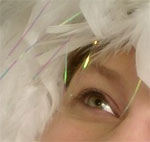If you’re anything like me, your photography hobby is more expensive than an out-of-control crack habit. Spending a lot of money on buying top-end photography gear is all good and well (and it feels lovely to have equipment that does what you want it to), but there’s a lot to be said for making sure your equipment is safe.
Yes, folks, it’s time for the most boring blog entry you’re ever gonna find here on Photocritic: Insurance.
Most house-insurances will cover photographic equipment – even if you’ve removed it from your house – up to a limit. Because you are already paying them, it may be worth giving them a ring, to see if perhaps they are able to insure all your camera gear cheaply. Be aware that many of them will only offer like-for-like insurance, however, so if your camera is a very well-kept, 2 year old EOS 20D, the insurance company will go on eBay and look for 2 year old 20D cameras, and you won’t get nearly as money back as you need to buy a new camera.
If you travel a lot, it may be that your travel insurance actually covers your camera equipment – in that case, your house insurance will cover your stuff when you’re at home, and your travel insurance will cover it at all other times. Make sure to check this first, however.
Also note that most insurance policies only cover theft, and occasionally damage done by third parties (baggage handlers at Heathrow, I’m looking at you…)
The best way forward – especially if you are working (semi-)professionally, is to get a dedicated photographer’s insurance. There are a lot of them out there, and prices vary, so shop around.
The most expensive insurance companies will offer new-for-old (the 20D in the above example would be replaced with a new 20D, or a 30D if the 20D has gone off sale), will cover loss (if you drop it in the ocean), damage (if you are butter-fingered), theft, theft from car boot or other securely locked place, and lots of other things. Basically, unless you give your camera to a stranger and forget about it, you should be covered.
In addition, it is worth considering getting public indemnity insurance and public liability insurance. These are often offered as part of the professional photographer’s insurances. Between them, it means that:
- If you drop a camera on that expensive Bugatti Veyron you’ve been asked to photograph, the insurance company will pay for the damages.
- If a model sues you after you ask her to take just one step back and she tumbles off a cliff, the insurance company picks up the tab.
- If you photograph a wedding, only to discover the next day that your memory cards have become irrecoverably corrupted, the bride and groom will hate you lots, and probably sue you for being an unprofessional bastard. The insurance will pick up that tab, too.
The best way to find a good photographer’s insurance is to go on a big photography forum such as dpreview.com or photo.net, and have a look what people say about photographic insurances. You’ll always find some good and some bad feed-back, but go with your gut instinct. It’s also worth asking other photographers who work in your area (both photographically and geographically) and find out who they are using, and if they are any good.
Insurance can be expensive, but can you afford to replace all your photo gear if something happens to it?
Knock on wood, folks, keep your fingers crossed and count your lucky stars, but just to make sure, that insurance policy may be just what keeps you from going nuts in the case something does happen.
Do you enjoy a smattering of random photography links? Well, squire, I welcome thee to join me on Twitter -
© Kamps Consulting Ltd. This article is licenced for use on Pixiq only. Please do not reproduce wholly or in part without a license. More info.

 If you’re willing to think out of the box, there are plenty of un-can-ny ideas you can put into life – like the cheeky idea by Photojojo, which can be summarised into ‘stick your photos on a can’. It’s a damn fine idea, though, and the results are guaranteed to bring a smile to the face of all who see it.
If you’re willing to think out of the box, there are plenty of un-can-ny ideas you can put into life – like the cheeky idea by Photojojo, which can be summarised into ‘stick your photos on a can’. It’s a damn fine idea, though, and the results are guaranteed to bring a smile to the face of all who see it. 














 I don’t normally single out single photographers, but I’ve been a fan of Renoux for so long, that I feel I have to plug the guy. He’s a Frenchman, no doubt with an intense passion for life. His portraiture work is some of the most amazing I’ve ever seen in my life. The sheer Joie de vivre, passion and je-ne-sais-quoi that radiates from his photos is out of this world.
I don’t normally single out single photographers, but I’ve been a fan of Renoux for so long, that I feel I have to plug the guy. He’s a Frenchman, no doubt with an intense passion for life. His portraiture work is some of the most amazing I’ve ever seen in my life. The sheer Joie de vivre, passion and je-ne-sais-quoi that radiates from his photos is out of this world.


